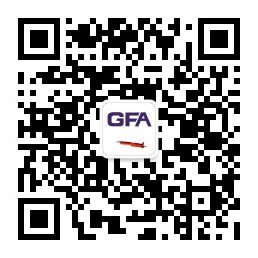-
Product
 Covers the entire application process for aviation/air defense and anti-missile weapon systems, from scientific research and design finalization to testing, evaluation, training, and exercises. MORE
Covers the entire application process for aviation/air defense and anti-missile weapon systems, from scientific research and design finalization to testing, evaluation, training, and exercises. MORE -
 The company has a solid foundation of comprehensive personnel, rich experience, and technical advantages in the field of unmanned aerial vehicles and artificial intelligence applications. It actively cooperates with many domestic and foreign units to carry out joint research, forming a unique unmanned aerial vehicle research direction of "Jinpengda" with strong sustainability. MORE
The company has a solid foundation of comprehensive personnel, rich experience, and technical advantages in the field of unmanned aerial vehicles and artificial intelligence applications. It actively cooperates with many domestic and foreign units to carry out joint research, forming a unique unmanned aerial vehicle research direction of "Jinpengda" with strong sustainability. MORE -
 The company upholds the business philosophy of "integrity, dedication, pragmatism, and excellence", adheres to the mission of "innovation, transcendence, and leadership", creates a "renowned brand of unmanned aerial vehicles", and wholeheartedly provides users with comprehensive and full-cycle high-quality, efficient, and reliable services. MORE
The company upholds the business philosophy of "integrity, dedication, pragmatism, and excellence", adheres to the mission of "innovation, transcendence, and leadership", creates a "renowned brand of unmanned aerial vehicles", and wholeheartedly provides users with comprehensive and full-cycle high-quality, efficient, and reliable services. MORE -
About
 GFA AVIATION TECHNOLOGY BEIJING Co..Ltd is a dual high-tech enterprise integrating R&D, production, and service of unmanned aerial vehicles and aero-engines. Established in 2012, with a registered capital of 67.35 million yuan, it is located in Zhongguancun Science Park - Fangshan Park, and has complete R&D and production facilities. MORE
GFA AVIATION TECHNOLOGY BEIJING Co..Ltd is a dual high-tech enterprise integrating R&D, production, and service of unmanned aerial vehicles and aero-engines. Established in 2012, with a registered capital of 67.35 million yuan, it is located in Zhongguancun Science Park - Fangshan Park, and has complete R&D and production facilities. MORE
CKS-313T1 test and control radio station

Technical Parameters
| Maximum range | Greater than 300km (line of sight) |
| Power supply | 28V DC |
| Communication interface | RS422 1 channel |
| Discrete output | 6 channels |
| Interface baud rate | 115.2kbps |
| Maximum range | Greater than 300km (line of sight) |
| Data update rate | 20Hz |
| Carrier frequency | 405MHz-415MHz frequency hopping/fixed frequency |
| Transmit power | 20W |
| Receive sensitivity | -121dbm |
| Operating temperature | -55℃~85℃(﹣40℃ startup,﹣55℃ operation) |
| Storage temperature | ﹣40℃~﹢65℃ |
| Shock | 15g |
The CKS-313T1 telemetry radio can be used as an airborne station or a ground station. It establishes a wireless communication link between the airborne station and the ground station, and then uploads and downloads data according to the predetermined time sequence logic. It also has the capability to communicate with multiple airborne stations from one ground station (it can connect up to 20 airborne stations).
Other Content
The CKS-313T2 dual-frequency telemetry and control transceiver can be used as an airborne unit or ground station. It establishes a wireless communication link between the airborne unit and the ground station, then uploads and downloads data according to a predetermined time sequence logic. The dual-frequency telemetry and control architecture can handle emergencies; when one channel fails, the other can be used as a backup. It also has the capability to communicate with multiple airborne units from one ground station (up to 20 airborne units can be connected).
KFS-3B integrated control and navigation unit
The KFS-3B flight control and navigation unit consists of a MEMS inertial measurement unit, a GNSS receiver, an atmospheric pressure sensor, and a main controller based on a high-performance ARM. The flight control and navigation unit uses sensor measurements to determine the flight path and commands, performing real-time calculations and controlling the aircraft to achieve flight control and navigation. It uses a MEMS inertial measurement unit to measure and collect the carrier's raw inertial navigation data, including rate gyro data and accelerometer data. A GNSS receiver obtains GNSS position and velocity data; dual GNSS is used to improve performance and reliability. An atmospheric pressure sensor receives total and static pressure from the airspeed tube to calculate parameters such as true airspeed, indicated airspeed, and flight altitude. Inertial navigation and GNSS combined navigation calculations are performed, and then the aircraft's control surfaces are controlled to achieve climbing, descending, and turning.
Image Display
Perhaps you would also like to know

Sales Phone
Sales Email:market@bjgfa.com
Switchboard:+86 010-80326991
Email:bjgfa@bjgfa.com
Address: No. 6 Qihang Street, Douhian Town, Fangshan District, Beijing
Website: 300.cn | Tag | Privacy Policy
COOKIES
Our website uses cookies and similar technologies to personalize the advertising shown to you and to help you get the best experience on our website. For more information, see our Privacy & Cookie Policy
COOKIES
Our website uses cookies and similar technologies to personalize the advertising shown to you and to help you get the best experience on our website. For more information, see our Privacy & Cookie Policy
These cookies are necessary for basic functions such as payment. Standard cookies cannot be turned off and do not store any of your information.
These cookies collect information, such as how many people are using our site or which pages are popular, to help us improve the customer experience. Turning these cookies off will mean we can't collect information to improve your experience.
These cookies enable the website to provide enhanced functionality and personalization. They may be set by us or by third-party providers whose services we have added to our pages. If you do not allow these cookies, some or all of these services may not function properly.
These cookies help us understand what you are interested in so that we can show you relevant advertising on other websites. Turning these cookies off will mean we are unable to show you any personalized advertising.






